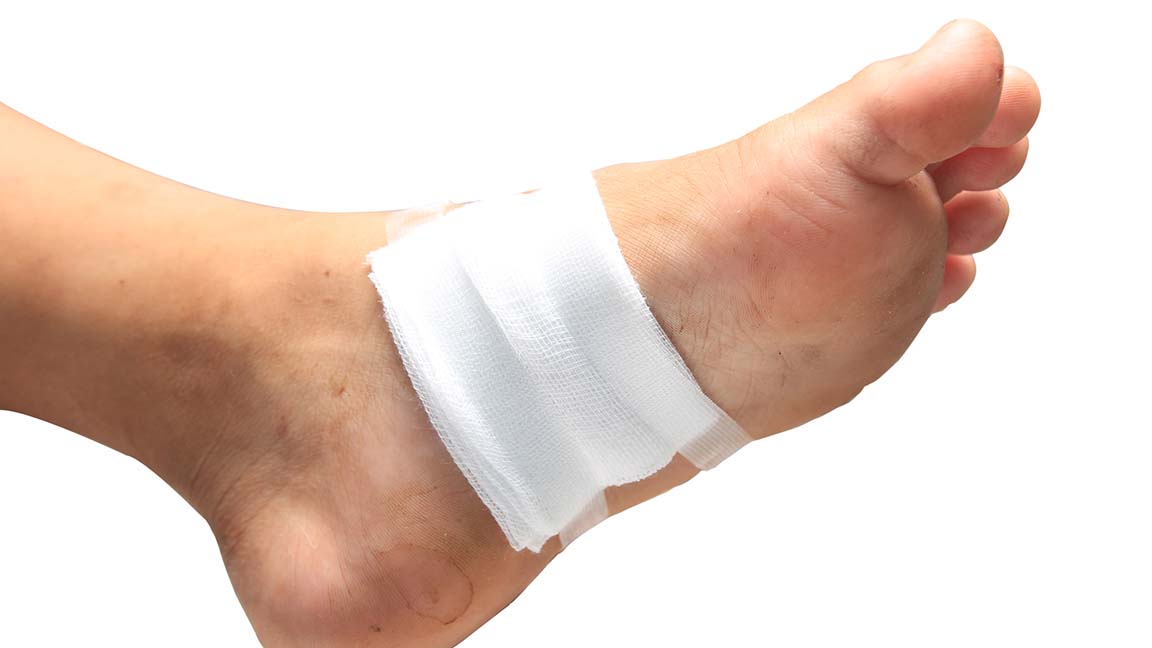A blister or callus on your foot may not seem like much to worry about. But for people with diabetes, they shouldn’t be taken lightly.
That’s because such seemingly minor irritations can develop into a much more dangerous problem – a foot ulcer. It is estimated that 10-15 percent of people with diabetes will develop a foot ulcer within their lifetime.
“Foot ulcers are fairly common, but only in people with advanced diabetes or very poor diabetes control,” says Dr. Philip Nicol, a physician who specializes in internal medicine and diabetes care at Tidelands Health Diabetes Center in Murrells Inlet.
It’s easy to understand how a small irritation like a blister or callus can develop into a dangerous ulcer when a person with diabetes is unable to feel their feet. People with diabetes are at risk for diabetic nerve damage, also known as diabetic neuropathy, which causes such symptoms as shooting pains, tingling and eventually numbness.
“Once the foot is numb it is easy to damage the skin because you can’t feel sensation normally,” says Dr. Nicol. “Infection can set in because the patient is unaware of the damage and doesn’t provide normal first aid to the injured area.”
Complicating matters? People with longstanding diabetes are also at risk of diabetic vascular disease, which is when cholesterol builds up and blocks blood flow to parts of the body.
“This is particularly significant in the foot as it reduces the ability of the body to heal the damaged area,” Dr. Nicol notes. “Also, ulcers may develop entirely on the basis of decreased blood supply to the foot. That is even more serious as it might require a surgical solution.”
Once an ulcer has developed it needs to be followed very closely by a surgeon or wound specialist. One common treatment is debridement, in which a physician removes dead, damaged or infected tissue to remove obstacles to the body’s natural healing mechanism.
Working through the healing process can be a challenge, Dr. Nicol says, because it can take time and significantly impact a person’s lifestyle.
“Ulcers can limit one’s mobility and often a comprehensive treatment program will require the patient to stay off that limb,” Nicol says. “It may be weeks to complete healing, so ulcers can lead to a major interruption of routine activities.”
Still, it’s important that people with diabetes promptly pursue treatment for foot ulcers and allow them to heal.
If an ulcer is not managed properly, the infection can spread into the bone, a condition called osteomyelitis, which Dr. Nicol says is very difficult to clear up.
“In a few unfortunate instances it can result in amputation,” he says.
Ultimately, the best treatment for foot ulcers is prevention, Dr. Nicol says. It’s essential that patients with diabetes properly manage their blood sugar levels to reduce their risk of diabetic neuropathy. Eating a healthy diet low in carbohydrates can help prevent or slow diabetic vascular disease.
Daily foot inspections are also good idea because they can help you detect a sore before it becomes a major problem, he says. If you can’t see the bottoms of your feet, ask a family member to check them or place a mirror on the floor and hover your foot over it to see if any sore or abrasions are reflected.




